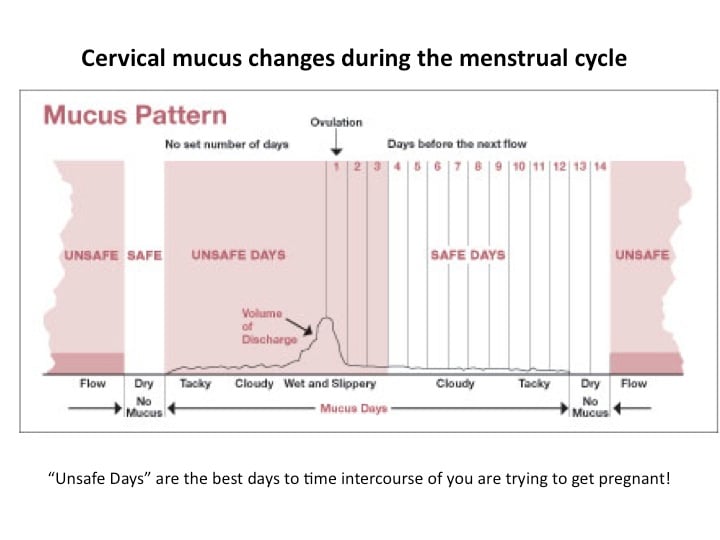We are experiencing a very high volume of calls and messages and ask for your patience. We will answer your portal messages within 48 hours.
We are experiencing a very high volume of calls and messages and ask for your patience. We will answer your portal messages within 48 hours.

Changes in the cervical mucus in response to hormonal changes during the menstrual cycle can be used to pinpoint the fertile window and help with timing intercourse. By paying attention to these changes, it's possible to tell the best time to get pregnant.
An increase in estrogen levels released by the growing egg results in large volumes of clear, watery mucus, which is receptive for sperm.
Once ovulation has taken place, progesterone levels rise and this results in the mucus that is low in volume and thick and therefore cannot be penetrated by sperm.
The “open window” for fertilization, at least as far as the cervix is concerned, starts with the estrogen peak just before ovulation, which provides maximal stimulation to the cervical glands. It lasts for only 2 – 3 days after ovulation, when progesterone levels rise. This is the best time to get pregnant. (You can get a sense of when this window will occur for you with this easy-to-use fertility calendar.)
Based on this knowledge, examination of the cervical mucus can be used to determine when ovulation is taking place and accordingly timing intercourse.
Here are some additional facts about checking cervical mucus
Basal body temperature monitoring is another frequently used method. However, the temperature change may be difficult to define, and the fertile window can only be defined retrospectively.
In most situations, if there is poor cervical mucus at time of ovulation, the treatment of choice is intrauterine insemination.
To see a qualified fertility specialist who can answer your questions about fertility, make an appointment at one of InVia’s four convenient Chicago-area fertility clinics.

Entire Website © 2003 - 2020
Karande and Associates d/b/a InVia
Fertility Specialists
